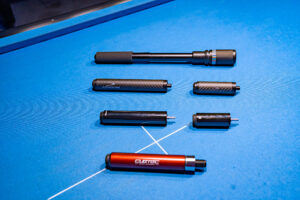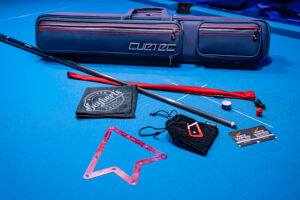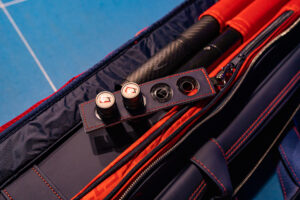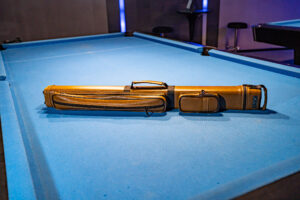
Taom® 2.0 Break / Jump Tip on a Cuetec Breach shaft
So you already know that the cue has a tip, it has to be changed from time to time you have herd that there are soft, medium and hard tips. But what does that all mean? What is a hard pool cue tip? What are hard pool cue tips made of? Are they cheaper or more expensive? Are they cost efficient? How does the hard pool cue tip impact your game?
The purpose of this post is to give you in depth knowledge of why hard pool cue tips exist.
A hard pool cue tip refers to a cue tip that is made from a harder material compared to softer alternatives. The cue tip is the part of the cue that makes direct contact with the cue ball during a shot. The choice of cue tip material can significantly impact the way a player experiences the game. Let’s delve into the details:
Material Composition:
Hard pool cue tips are typically made from materials such as phenolic resin, layered leather, or a combination of both. Phenolic resin tips are known for their extreme hardness, durability, and resistance to wear. Layered leather tips are composed of multiple layers of compressed leather, which can also provide a harder feel compared to single-layer leather tips.
Advantages:
- Durability: Hard tips are generally more durable than softer ones, meaning they last longer and require less frequent replacement.
- Consistency: Hard tips tend to provide a more consistent transfer of energy from the cue to the cue ball, leading to more predictable and accurate shots. This is why most break cues use hard tips.
- Reduced Mushrooming: Hard tips are less prone to mushrooming (flattening and spreading out at the edges) compared to softer tips, hence making them more cost efficient, they just last longer.
Disadvantages:
- Feel and Control: Some players prefer the softer feel of tips, as they believe it provides better control and feedback during shots
- Less Spin: Hard tips may offer less grip on the cue ball, reducing the amount of spin (English) that can be applied to the ball. Also, it is much easier to miscue while trying to use side spin on the ball
- Maintenance: Maintaining a hard pool cue tip does not involve regular shaping and scuffing compared to soft and medium tips this saves time, effort and money since you do not need to change this tipe of tip that often.
- Extremely important! – You should be very careful in using tip tools on phenolic resin tips. Since they are not made of leather, their shaping requires a different method and tools compared to most shaping accessories designed to shape tips made out of leather.
Price
Overall the price between soft, medium and hard tips is the same. The differences in price come mainly in terms of brand and quality. If you are wondering what type of brand to choose, I would strongly suggest that you look into what type of tips do pro pool players use.
Humidity and Performance:
Humidity can affect all pool cue tips. Changes in humidity can cause the cue tip to expand or contract, affecting its hardness and overall performance. Due to the hardness of the tip however, the hard pool cue tips are less likely to suffer from differences in performance when exposed to humidity, especially if the tip is made from phenolic resin.
It’s essential however to store cues in a controlled environment to minimize the impact of humidity. You can choose to have multiple shafts with different types of tip hardness to adapt to varying playing conditions if you are competing.
Conclusion
In conclusion, the choice between a hard pool cue tip and other types depends on personal preference, playing style and humidity, but nevertheless hard pool cue tips are used best for breaking.




